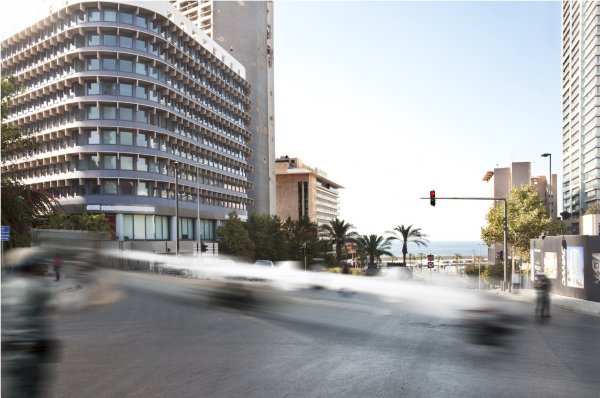Published here by ArtDiscover.
With this piece I won ArtDiscover's global competition Talents 2013 to find the best new voices in contemporary art writing.
At first glance, the title of CRG Gallery’s show The Lebanese Rocket Society – A Tribute To Dreamers appears an (intergalactic) flight of fancy. However, this multi-faceted project by Khalil Joreige and Joana Hadjithomas proves to be more than mere fantasy.

The work revives the extraordinary story of a forgotten project of space rocket development from 1960s Beirut, in which students of the Haigazian University, led by their charismatic Professor Manoug Manougian, designed and launched rockets with Space Race aspirations. The project received popular acclaim in its day, but had been apparently lost to history, until now.
At the gallery entrance, we meet photocopies of old letters and squinting faces from grainy black-and-white photographs, conventional iconography of artist-working-with-archive. This historicism shifts as we move through the space, replaced by a shine that characterises the contemporary pieces. Golden Record sees the artists reconstitute the sounds of 1960s Lebanon on LP (mimicking the presence of such recordings on NASA voyages). The work does not exist as object however, but as projection: enlarged and spinning on the floor. The analogue nature of the sound confronts the digital nature of its appearance. Sleek and gilded, the work’s apparent physicality is undermined by its unstable virtuality as pure surface.

In a talk given at the opening of the exhibition the artists joked that certain of the artistic community in Lebanon made it hard for projects such as theirs to be believable. This reference to the artifice of Walid Raad’s Atlas Group archive was met with laughter, but the line between fact and fiction is key to the stakes here. Joreige and Hadjithomas have not merely presented original excavated information, but have worked to reproduce it in simulacrum. In Restaged the artists constructed a white likeness of one of the Cedar rockets, and transported it through the streets of Beirut. The photographs that document this performance are ambiguous: in every image the background is in focus, but the rocket on its trailer is blurred – like smudges of white paint across photorealist paintings. The artists claim this occurred naturally as part of the rush of the day's events, but the images’ sleekness seems a deliberate aesthetic decision. The performance was intended to re-enact the original course of the rockets from University to launch-site, but the recreation of ‘reality’ feels problematised by images which conceal the rocket itself. If in part what Hadjithomas and Joreige are challenging is the pernicious reductivity of global historical narratives – which engender the loss of such projects – is not this aspect of its regeneration problematic? They claim to expose a historical truth to the present, and yet systematically destabilise its representation.

The President's Album, too, feels ambiguously presented. Referring to an album of photographs gifted to the Lebanese President at the height of the Society's fame, we are told the original book lies (conveniently?) out of sight in a private collection. The artists have reproduced the album on enormous lengths of paper, on which is also printed a scale image of their simulacrum rocket. Instead of showing it in entirety, the artists made numerous copies and folded each to reveal just a fraction of the whole. On the wall, two nails pin each huge paper fan in place. One has the urge to rip them off, to unravel them and view their totality. This aspect of display is at once analogous with the artists' original project – which unravels a thread of history – and simultaneously feels antithetical to it. The folding creates a beautiful visual effect, but is also a mode of concealment. Just as the Golden Record hovers in space, and the Restaged photographs feel digitally distorted to the point of denying identification of the rocket, here too visuality remains partial and unsatisfying. Is this a statement about our inability to truly see or read the past coherently? To what end is this ambivalence about vision pursued?

As these questions attest, despite Joreige and Hadjithomas’ claims, the work complicates as much as it reveals, and constructs anew as much as it takes from the past. Their decision to quietly sow ambivalence, and blur the line between the factual and fictional, the visible and the out-of-sight, compellingly troubles the role contemporary art can play in thinking about history. The exhibition’s power is strongest in places where its original archival spirit is used as catalyst for fresh work in the present. In these moments it is exciting, disquieting and rather beautiful. Whether it constitutes a fitting ‘tribute to dreamers’, however, is a question whose answer may truly be lost to time.
The exhibition ran at CRG gallery, NYC, in 2013.
The Lebanese Rocket Society exists in numerous iterations, including a feature-length documentary not featured at the gallery. Please see Joreige and Hadjithomas’ website for more information.